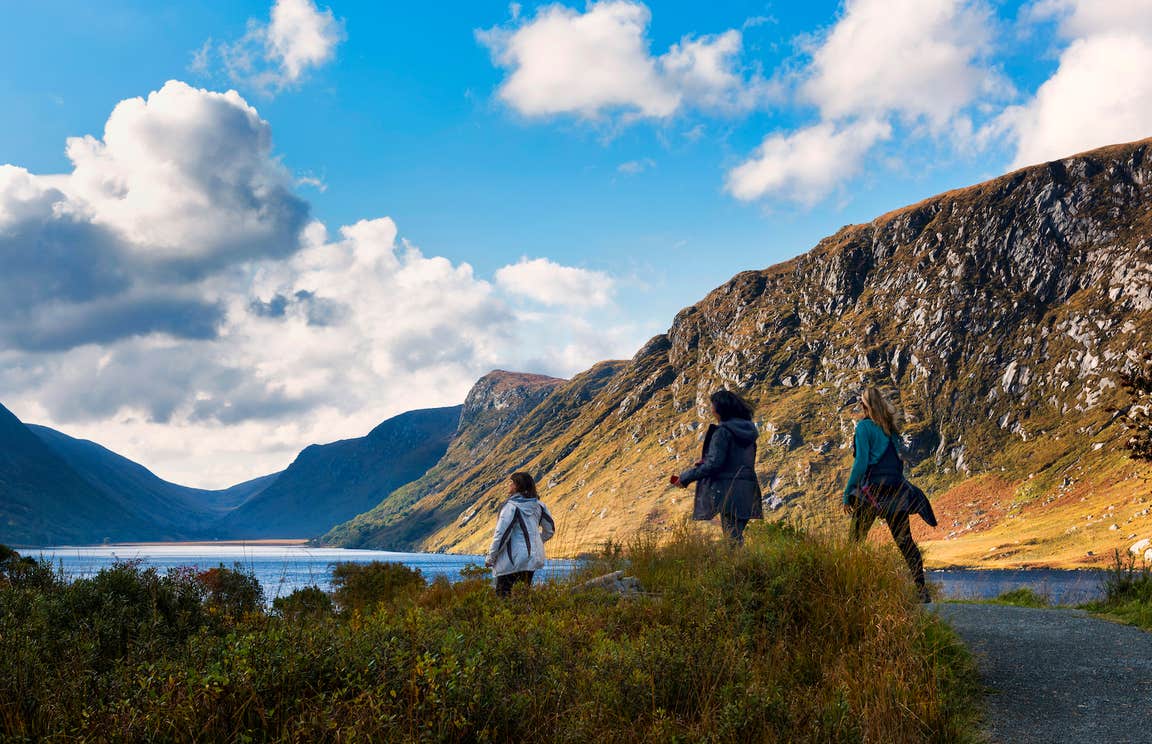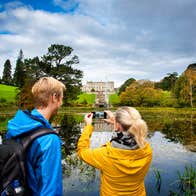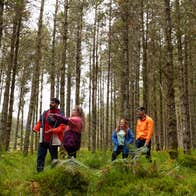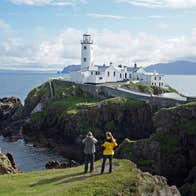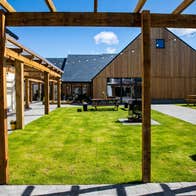For a small island nation, Ireland has an impressive total of six national parks, each bringing something special to the table.
The unique karst landscape of the Burren National Park in Clare stretches across roughly 1,800 hectares and looks like a set from a science-fiction film. Lace up your hiking boots and navigate the rocky surface and admire the various species of orchid peaking out from the limestone.
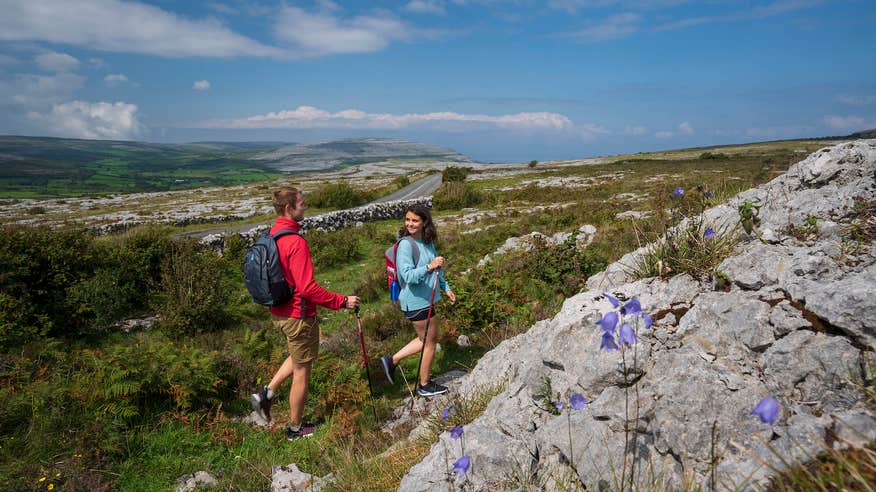
Recognised as a UNESCO biosphere reserve, Killarney National Park is a haven for hikers. With plenty of different walking routes available, take your pick and trek mountains, get lost in the beautiful forests or enjoy a breather by the lakes. If you're lucky, you might spot the park's native red deer, but be sure to keep a safe distance.
Head to Mayo’s Wild Nephin National Park and discover one of the remaining blanket bog systems still active in Western Europe. Spanning 15,000 hectares, follow one of the park's trails and enjoy incredible views of the surrounding area, including Acaill (Achill Island) and Nephin Beg mountain range. After, visit the National Park Visitor Centre nearby to learn more about the park's habitat through their interpretative exhibition.
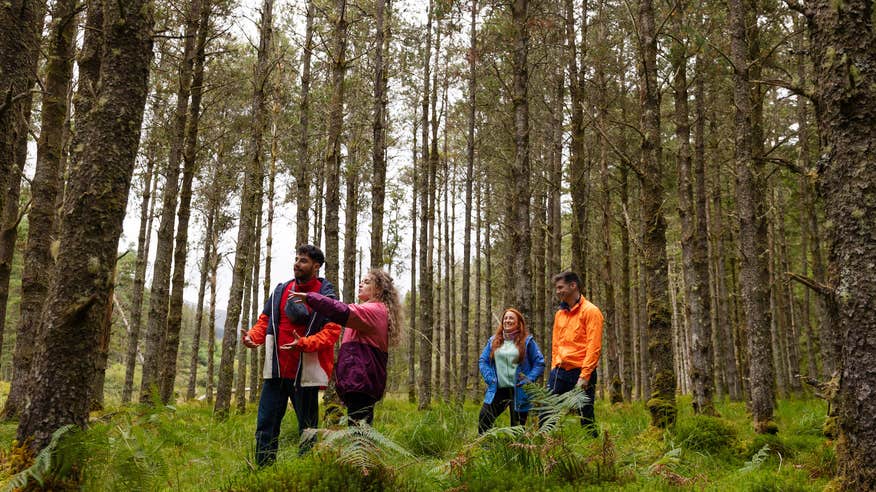
Coming in at 23,000 hectares, Wicklow Mountains National Park is the largest of Ireland's National Parks and is perfect for history buffs who love to hike. Alongside beautiful lakes, wooded valleys and winding mountain roads, the park is also home to historic ruins such as St Kevin’s monastic settlement at Glendalough.
Every part of Connemara National Park in Galway is graced with natural beauty, with heather covered mountainsides and purple moor-grass dominating the terrain. Hike to the summit of Diamond Hill for the best views of the park, or embark on your own wildlife trail by choosing from the four available routes. Say hello (from a safe distance) to the local Connemara ponies, red deer and peregrine falcons.
Head north to Glenveagh National Park in Donegal. Living among the rugged mountains, lovely lakes and native oak woodlands are red deer and the rare Golden Eagle, which was reintroduced to the area in 2001. Stop by the park's castle and manicured gardens for a look at the colourful flora, and top off your visit with a coffee and a sweet treat at the tearoom onsite.
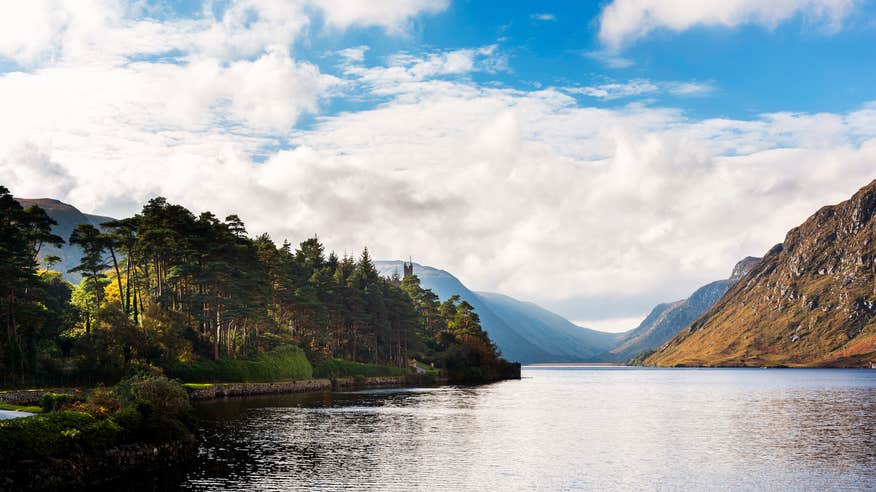
Europe’s largest urban park, the Phoenix Park in the heart of Dublin city, is not only home to the President of Ireland but also a wide range of wildlife.
Aside from its diverse flora of sweeping grasslands and towering native trees, the Phoenix Park has large herds of fallow deer. Deer have called the park home since the 17th century, and graze peacefully in the grounds, but be sure to keep your distance.
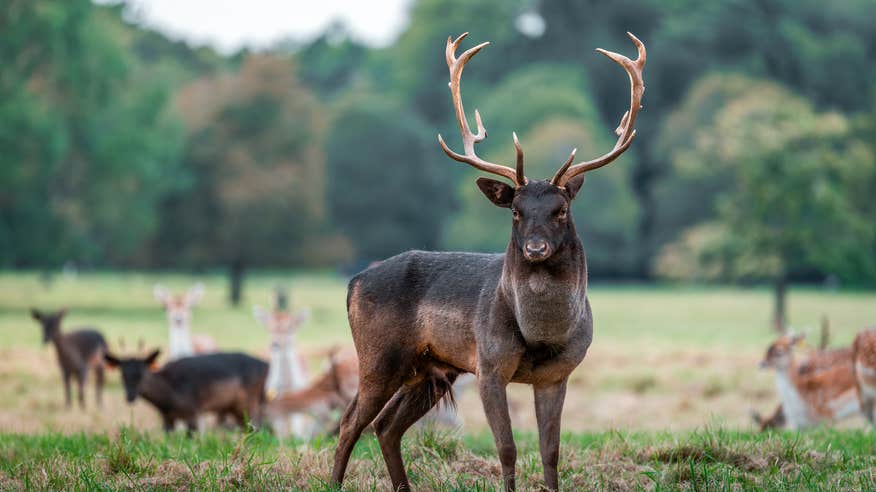
The deer's neighbours in Dublin Zoo definitely walk more on the wild side. Spend the day roaming the expansive facility and you'll find everything from seals and red pandas to elephants and lions. To see even more of the park, choose from one of its walking routes or rent a bike and cycle the entire grounds.
Along the shores of the River Shannon lies the Shannon Callows, an area of flat land between Athlone and Portumna, connected through a stream that flows out of Lough Ree and enters Lough Derg. Thanks to the shallow gradient of the land, this stream regularly floods its banks which, over the years, has created its own biodiverse wet grassland.
Today, the Shannon Callows is known for being one of the largest concentrations of breeding waders like lapwing, redshank, curlew, sandpiper and godwit. It also hosts flocks of migrant wildbirds as well as otters, foxes and ferret mink.
Geological and archaeological features are gently revealed in this beautiful open and natural space at Cavan Burren Park. Start your day at the visitor centre where you'll learn about how the park's grounds originated from a tropical sea south of the equator and evolved through the Ice Ages to become the parkland that we see today. Then explore the peaceful landscape with gorgeous views of Cavan via the park's five walking routes. Scattered among the natural environment you'll find glacial erratics and ancient dolmen – clear nods to the natural and man-made history of Cavan.
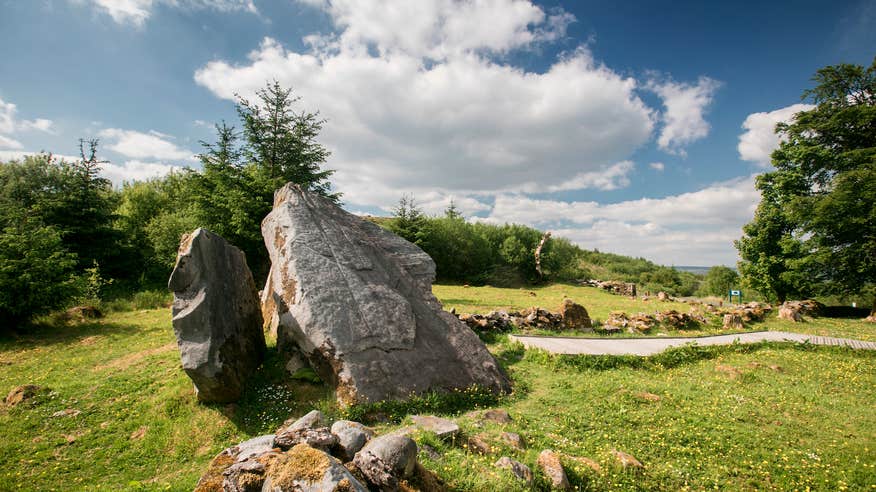
Discover a slice of Irish history at Lough Boora Discovery Park. Take the Mesolithic Route through lush wetlands and keep an eye out for the flocks of whooper swans, skylarks, hares and foxes. This serene trail hugs the shores of Lough Boora before crossing an old railway embankment and the eastern bank of the canal before reaching the Mesolithic site dating to 6500BC.
Art lovers will also appreciate the Sculpture Loop, which features pieces inspired by the rich natural and industrial legacy of the Irish peat lands.
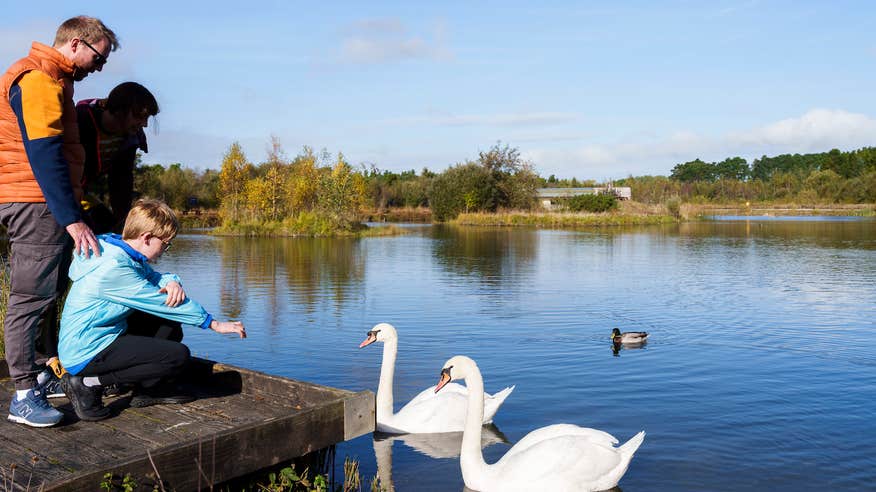
The internationally-acclaimed Wexford Slobs and Wildfowl Reserve has become a popular destination for some of the world's feathery, migratory birds. As much as 35% of the world’s population of greater white-fronted geese settle here each winter, along with other species such as snow, bean and brent geese. Iceland’s whooper swans also make their home here, as well as Bewick's swans from Siberia.
For an up-close look at the reserve's wildlife, request a guided tour and learn about each species as they fly overhead.
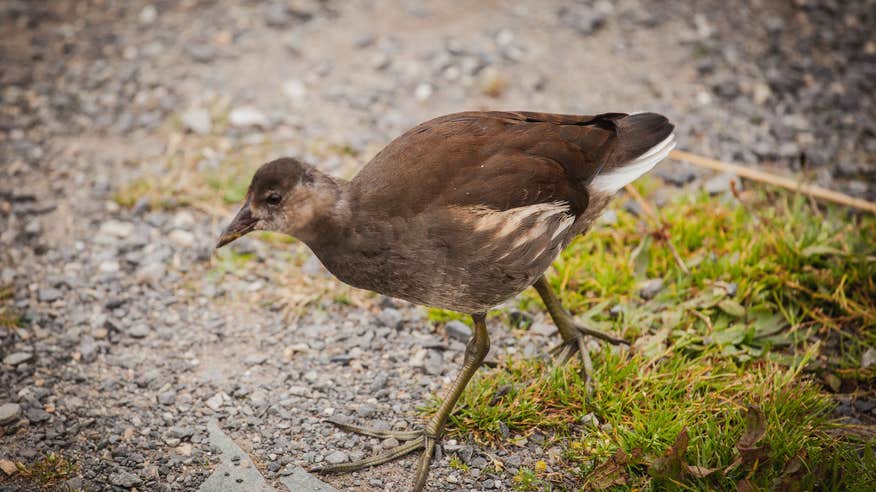
Just off the Wexford coast are the Saltee Islands, Great Saltee and Little Saltee, a haven for an impressive variety of birds, from gannets and gulls to puffins and Manx shearwaters. Five kilometres off the coast of Kilmore Quay, the islands are important stopping off points for thousands of migrating birds.
It’s not just birds that live here, the Great Saltee has a breeding population of grey seals, one of the very few in eastern Ireland. Up to 120 of the playful animals are here during autumn, with up to 20 pups born every year. The Saltees are among the most ancient islands of Europe, with the bedrock between 600 and 2,000 million years old.
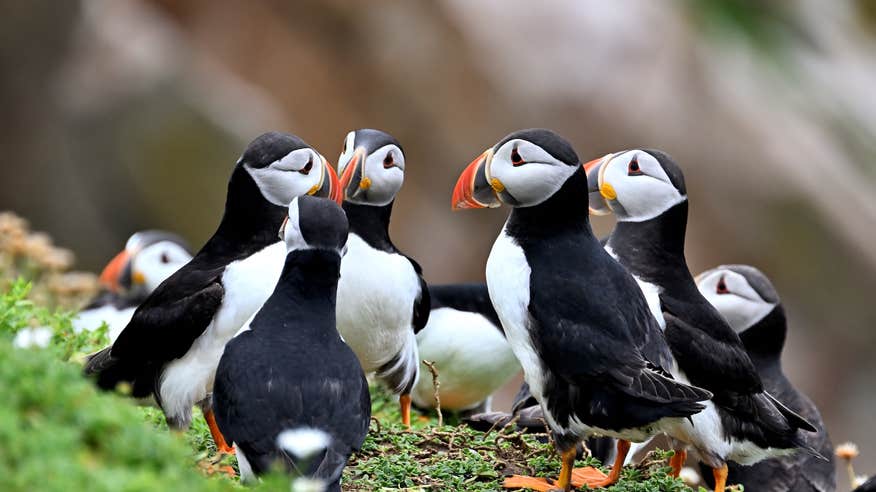
Stretching between Tramore and Dungarvan, the Copper Coast is named for the 19th-century copper mines which rest at the heart of the surrounding cliffs. The incredible coastline spans 25km and was recognised as an UNESCO Global Geopark in 2015.
The coast is dotted with scalloped beaches and peaceful coves, both enclosed by rocky headlands which were moulded by oceans, volcanoes, deserts and ice sheets over thousands of years. If you fancy walking the length of the coast, book in a guided tour from the Geopark and pick up interesting facts as you go.
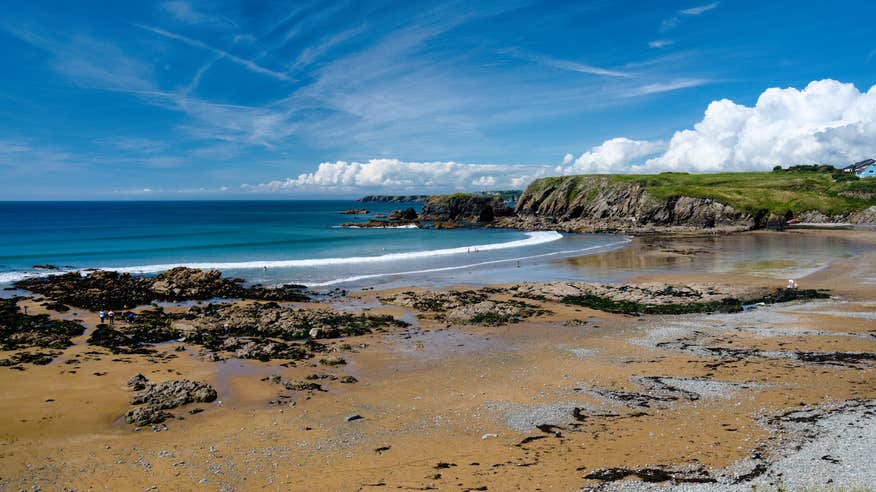
Set sail out onto the Atlantic Ocean at Carrigaholt to see Europe’s largest pod of bottlenose dolphins with Dolphinwatch. Hop aboard the passenger ship and enjoy a guided tour from marine biologist Mary-Kate, who shares interesting facts about the friendly creatures and their natural habitat.
There are roughly 200 dolphins living here at the mouth of the River Shannon, as well as oceanic birds, grey seals and even the odd whale.
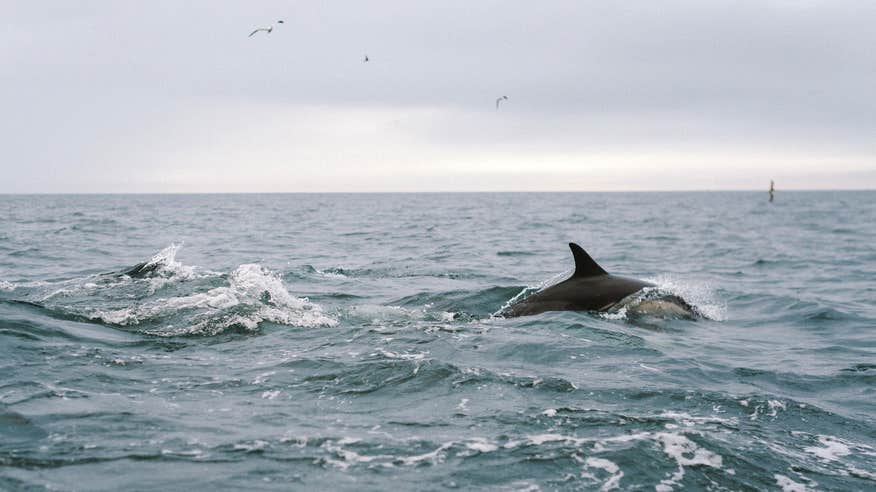
Spend time at sea with Atlantic Whale and Wildlife Tours. These epic excursions out on the Atlantic take visitors out to some of the best places to spot whales and dolphins along Cork’s coast. Share the clear blue waters with breaching humpback whales, feeding fin whales and bow-riding dolphins as the boat chugs alongside them. You’ll definitely need your camera for this adventure.
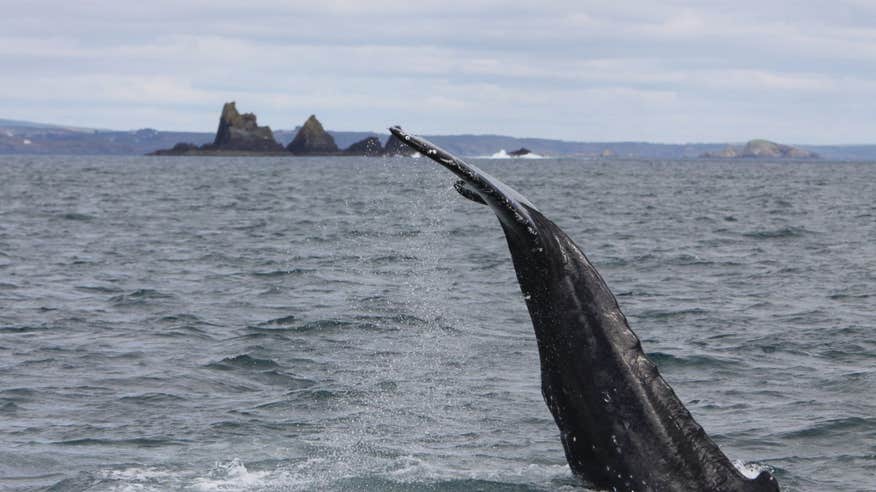
Continue to reconnect with the natural world and discover more of Ireland's thriving nature and wildlife.
